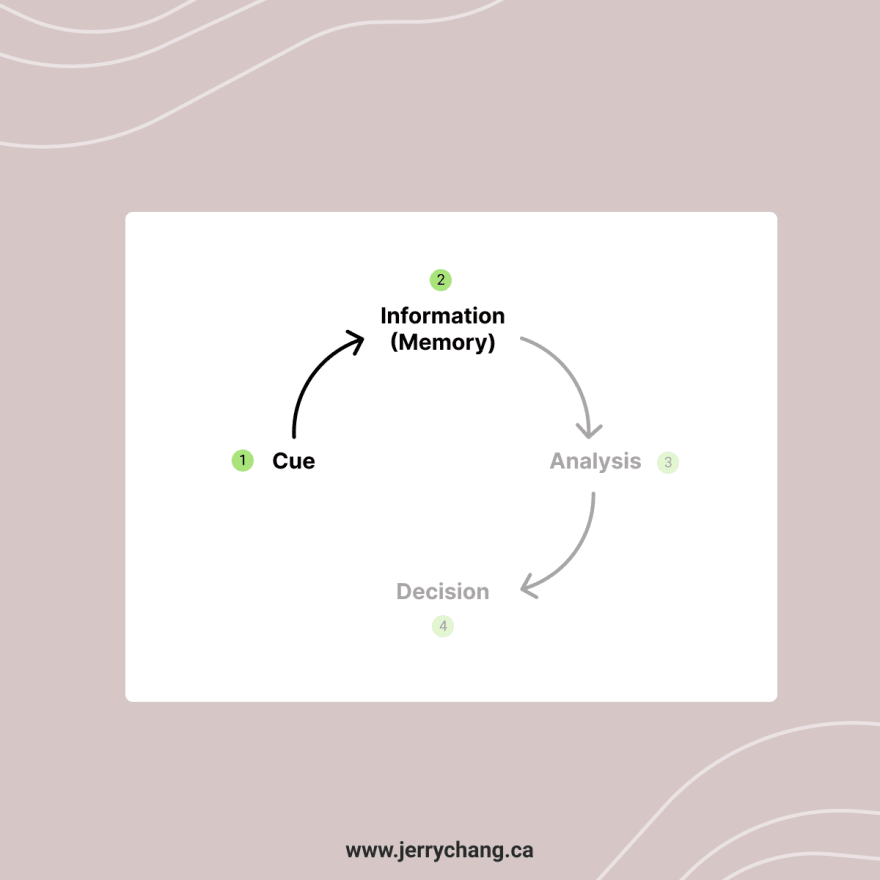The recognition-primed decision (RPD) model was introduced by Dr. Gary Klein.
It’s a model for understanding how these experts are able to instantaneously come up with answers or solutions in highly complex situations.
These results are from research that studied firefighters, and later on military operations have shifted their training to applied similar models into their training on decision making.
There are four distinct phases of this expert intuition process.
Let’s go through the process!
1️⃣ 𝗖𝘂𝗲 - A pattern is recognized in a situation (System 1)
2️⃣ 𝗜𝗻𝗳𝗼𝗿𝗺𝗮𝘁𝗶𝗼𝗻 (𝗠𝗲𝗺𝗼𝗿𝘆) - The pattern is matched with a piece of information in the associative memory (System 1)
3️⃣ 𝗔𝗻𝗮𝗹𝘆𝘀𝗶𝘀 - Analysis takes place to determine if it makes sense or if it will work (System 2)
4️⃣ 𝗗𝗲𝗰𝗶𝘀𝗶𝗼𝗻 - A decision is proposed or made (Assuming it passes phase 3)
💡 System 1 vs System 2
You may have noticed I labeled the steps with either System 1 or 2.
These two systems were introduced by Dr. Daniel Kahneman in his book “Thinking fast and slow” to better understand how humans think.
System 1 - intuitive thinking or “fast thinking”
System 2 - analysis or “slow thinking”
This means that step 1 and 2 in the RPD process are the works of system 1.
This is why these experts are unable to trace the steps of how they arrived at a solution or answer because this process happens automatically.
It is their intuitive thinking that allows them to not only recognize the pattern but retrieve the correct information.
You can probably tell why this is important for individuals like firefighters and military personnels because these individuals tend to operate in highly complex, fast paced and time sensitive environments.
How can I apply this to my learning ?
Even though this says “expert decision making”, this process is the same for everyone.
When you are learning, you can improve stages 1 and 2 in the decision making process in order to make it easier to recall information.
Specifically, these are the cue (stage 1) and information retrieval (stage 2) phase of the decision making process.
And how you improve these two phases will be different for everyone.
What that means in practice can be exposing your brain to multiple sources of information (videos, images, audio and writing) when learning.
This will improve your brain’s ability to recognize patterns in programming or anything else you are learning about.
Again, you don’t have to measure this or see if it works.
Just make sure you are exposing yourself to multiple sources of information to enhance the cue process, and let your brain do all the heavy lifting!
And that’s Dr. Gary Klein’s model for understanding expert intuition.
Next up we’ll contrast this with another model by Dr. Paul Meehl.
It uses the same RPD process described above but we’ll take a look at why it doesn’t work in some scenarios for some experts (ie Stock pickers and political scientists ).
That’s all for now.
If you learned something or enjoyed this post then be sure to share it with someone who you think would benefit from it!
Be sure to follow me to stay up-to-date 👉 @jareechang




Top comments (0)